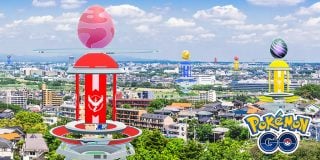Every developer under the sun has dabbled in the 3D platformer space at one point or another, but Nintendo has consistently proven that no one does it better than it does — and Donkey Kong Bananza is no exception to that rule. It’s a master class in level design and creativity, packed with all the Nintendo charm I’ve come to expect from a company known for its astonishing level of polish and quality. Bananza somehow takes everything that made Super Mario Odyssey great and mixes in the open-ended exploration found in Breath of the Wild, while adding in a dash of freshness found in Splatoon. That might sound like an impossible task, yet Nintendo pulled it off — and created the most engaging 3D platformer I’ve ever played.
Monkey Smash
Donkey Kong Bananza wastes absolutely no time throwing you into the action. It opens in a dark cavern with DK mining for gold and delicious Banandium Gems alongside the most adorable little monkey miners you’ve ever seen. After a brief cutscene of DK busting through the wall like the Kool-Aid Man, Bananza thrusts you immediately into the gameplay. These opening moments instantly set the tone for what’s to come: destroy everything in sight and collect everything you can. Not only can you smash through the environment in front of you, but you can also burrow into the ground or punch your way through the ceiling. And while you could just move forward to the next objective by following the prebuilt path, it’s a lot more fun to bulldoze through a cave wall instead. Right from the start, Bananza dares you to break the rules, chart your own course, and explore each space in any way you see fit.
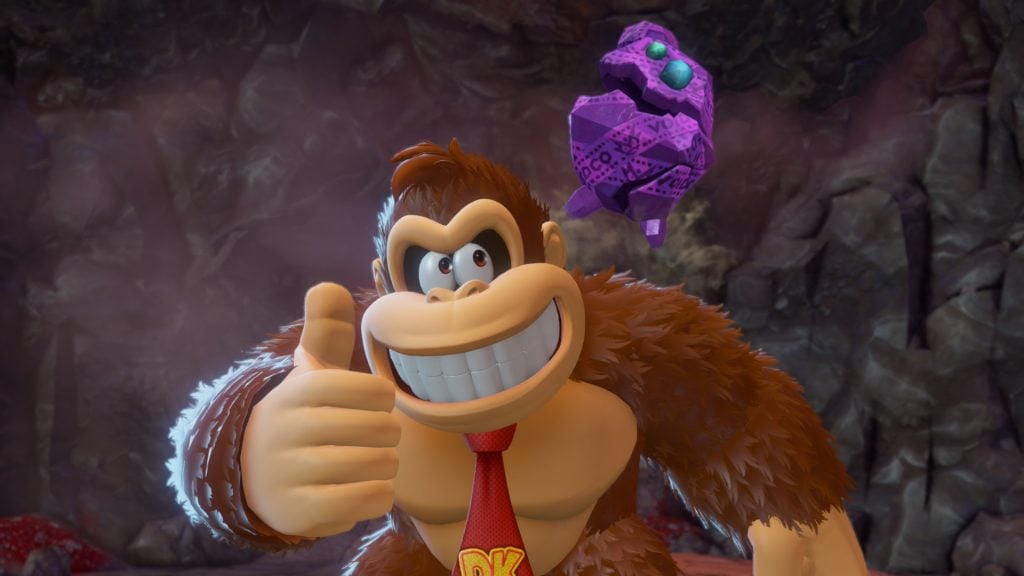
In the opening area alone — an area that realistically would’ve taken about ten minutes to navigate if I’d just followed the path — I spent over an hour smashing every rock in sight and hoarding more gold than I had any right to that early in the game. I couldn’t believe just how much fun, and almost therapeutic, it felt to reduce an entire mine to rubble with nothing but my bare hands.
And this is just the opening section of the game? I’m in for one long adventure!
Monkey Tales
Shortly after the opening tutorial, what appears to be a fireball crashes into Donkey Kong’s home, thrusting him and his friends deep into the Earth’s crust. When DK comes to, he quickly stumbles upon a mysterious, singing rock who, after a bit of back and forth, convinces him to take it along. After a few story beats, it’s revealed that this singing rock is actually Pauline, who has been kidnapped by an evil organization for reasons yet unknown. And just as she transforms back into her human form, we’re introduced to the villains of our story.
Meet VoidCo! A mining corporation hellbent on tunneling to the planet’s core and snatching up every last Banandium Gem along the way. At the top of the food chain is Void Kong, VoidCo’s egotistical, pint-sized president with an obvious Napoleon complex. His muscle is Grumpy Kong, who, for a lumbering brute, actually has some pretty fancy engineering skills later in the game, and Poppy Kong, the brains of the operation. It’s classic Nintendo villainy through and through, and the whole crew instantly gave me serious Broodal vibes from Super Mario Odyssey — cartoonishly evil, but in the most Nintendo way possible.
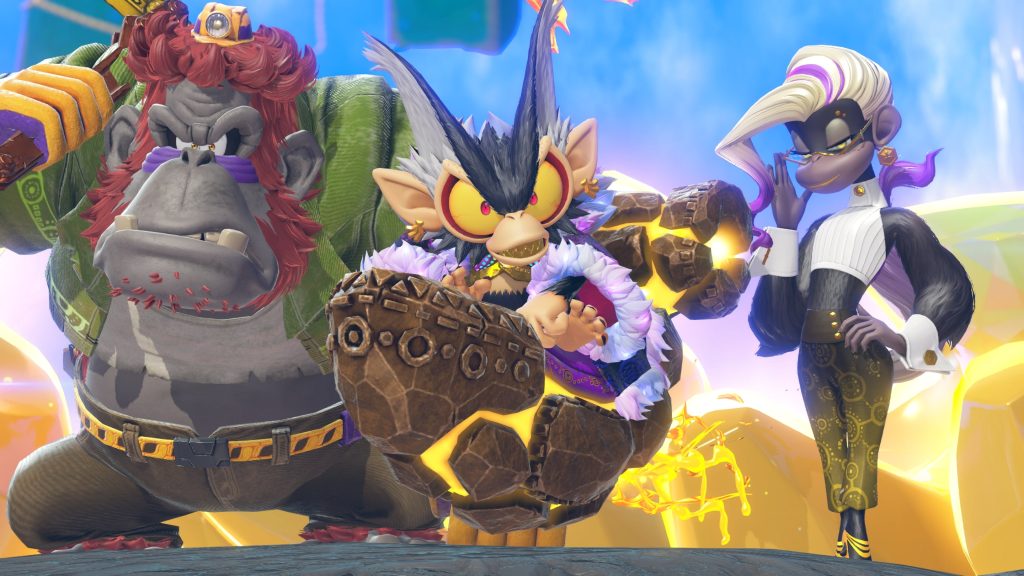
After a quick battle, the mission becomes clear. All Pauline wants is to make it back to the surface. DK, on the other hand, is laser-focused on scoring more bananas. So, the two form an unlikely alliance: she wants to get home, he’s chasing his next potassium fix — and the fastest way to achieve both is by charging straight toward the planet’s core and putting a stop to VoidCo’s evil plans.
To reach their goal, DK and Pauline must journey through a series of hidden worlds buried deep beneath the planet’s surface; each layer, a massive, sprawling stage with its own distinct identity. And while you might expect a descent into the planet’s core to mean nothing but endless rock and magma, that couldn’t be further from the truth. As you dig deeper, you’ll uncover lush jungles, icy tundras, fiery caverns, and even tropical resorts — all bustling with unique inhabitants and accompanied by a toe-tapping soundtrack that complements each stage perfectly.
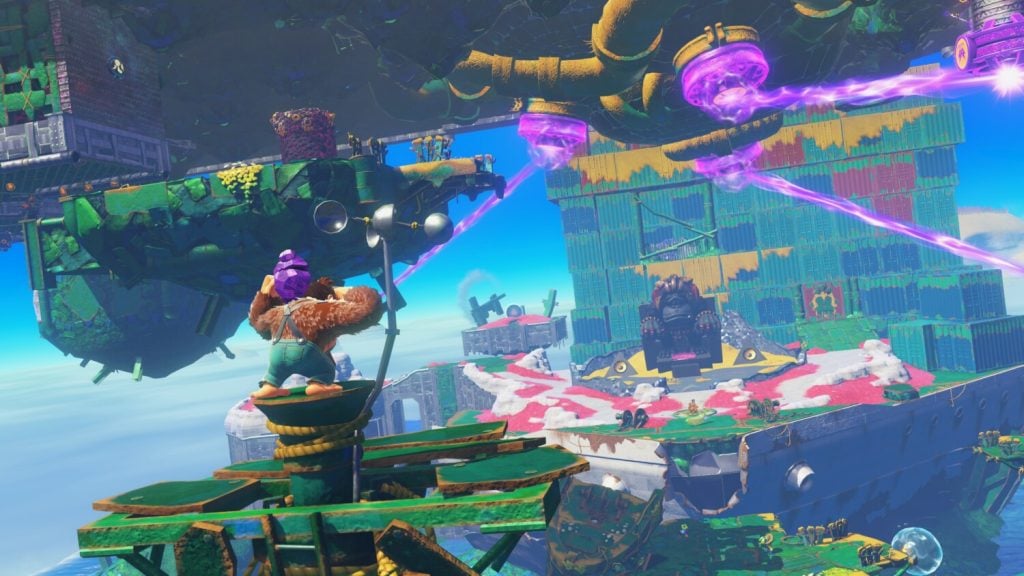
Take Lagoon Layer, for instance, one of the first stages you get to explore in Bananza. The world is bright, cheerful, and filled with enthusiastic NPCs everywhere you look. It’s paired with an absolutely bombastic soundtrack that feels like it would be right at home in an amusement park.
Now contrast that with a later stage like Tallfall Cliffs. The landscapes there are dark and brooding, and the soundtrack takes a more industrial tone. The music pairs beautifully with the visuals, and each stage in Bananza has its own distinct sound and atmosphere.
To put it bluntly, Bananza’s soundtrack doesn’t just rival Super Mario Odyssey — it often beats it. It’s hit after hit, with lovingly crafted melodies that fit each stage like a glove. Nintendo has been on an absolute hot streak this year when it comes to music, starting with the massive variety of amazing tunes found in Mario Kart Worlds. I’m loving every second!
That same level of care and creativity carries over into Bananza’s world design as well. In each layer, the game provides a clear story path with an objective marker placed on your map to guide you to the main story beats. But it actively encourages you to take the road less traveled and explore the world on your own terms, tempting you with interesting terrains scattered across the map. And much like Odyssey and its hidden Moons, each of these worlds is absolutely packed with collectibles waiting to be discovered.
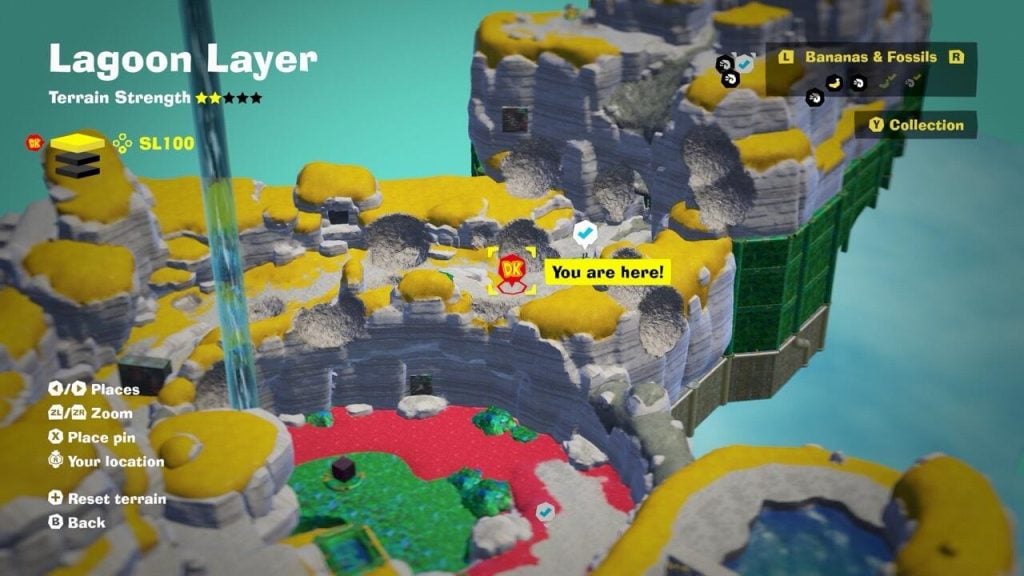
Monkey Hoard
The primary collectible is the Banandium Gem, a giant, transparent banana gem that DK gobbles up on sight. After feasting on five gems, you are rewarded with a skill point, which can be used to unlock new abilities or increase DK’s health and stamina. But unlike Odyssey, you’re never actually required to collect them. While they’re optional, finding them got me excited every single time. And if you’re anything like me, the knowledge that dozens of these sparkling gems are scattered across each level creates an irresistible urge to hunt down and feast on every single one of them.
Some gems are placed along obvious paths, while others require clever puzzle-solving or environmental manipulation, like throwing chunks of ice into lava to make a bridge. Still, others are hidden in unmarked spots, with the only way to find them being to smash and destroy everything in sight. Discovering these hidden gems while just meandering around the level quickly became my favorite part of Bananza. The game constantly rewards your curiosity and your desire to explore. And that’s the real magic here — there’s no strict rulebook in Bananza. Nintendo clearly just wants you to play, explore, and have fun in this massive underground playground and leaves the rules up to the player. Want to speedrun straight to the objective? Okay! Want to spend four hours breaking every block in the stage? Sure, why not! Bananza doesn’t care how you play, as long as you have fun.
But, it’s not just Banandium Gems. Bananza features a wide variety of other collectibles that serve different purposes. The most common is gold, which can be used to buy items or build new structures in each world. You’ll also come across medallions, which can be exchanged for bananas from vendors scattered across each area. These items are abundent in Bananza, but in the end game, you’ll be happy you collected as much gold as you could.
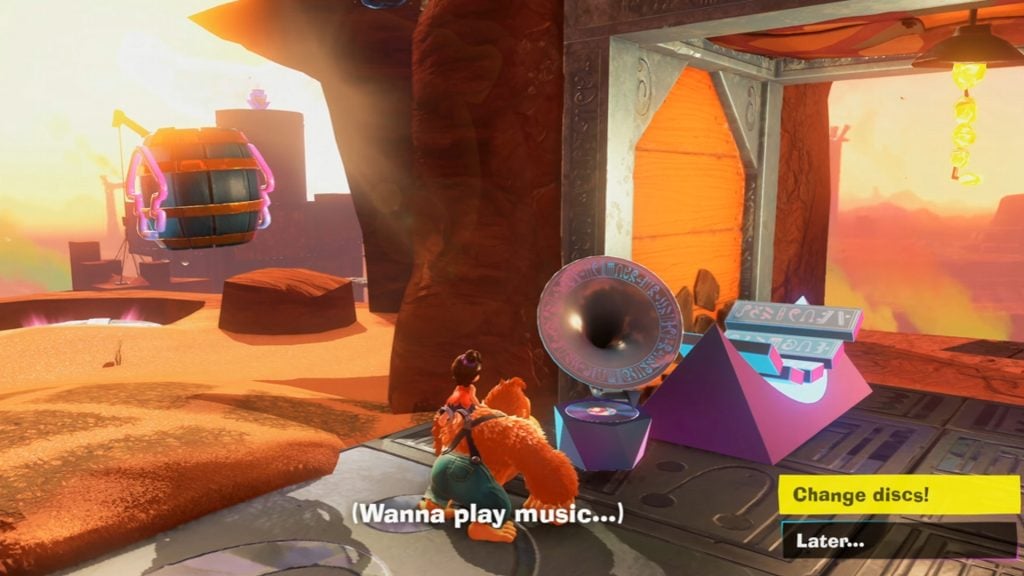
You may also occasionally stumble upon CDs that contain dozens of tracks from Bananza and other classics from DK’s history. These CDs are earned by defeating enemies, though they don’t drop nearly as often as I’d like. But whenever I did find one, I couldn’t wait to hear what I’d unlocked , and take a little break to just sit back and jam for a while.
But my favorite collectible by far has to be Fossils. Like Banandium Gems, Fossils are cleverly hidden throughout each stage. Some are in plain sight and just need to be smashed, while others are buried in hidden caverns. There are even giant Fossils that require you to solve a small puzzle in order to collect it. But, why collect Fossils, you might ask? Because they unlock one of the coolest rewards in the game: new outfits for both Donkey Kong and Pauline!
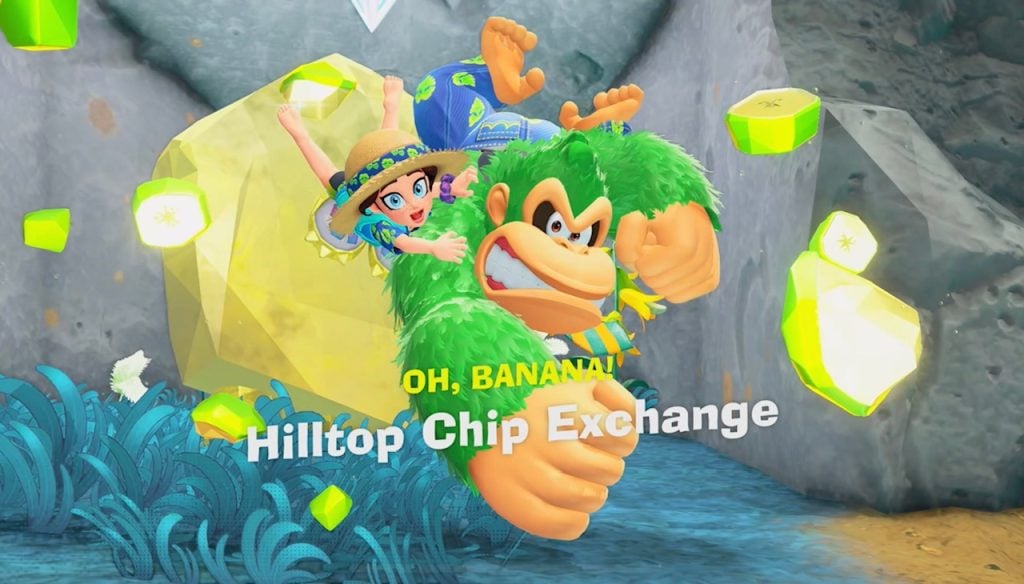
Unlike Odyssey, where costumes were purely cosmetic, Bananza’s outfits actually impact gameplay. Some offer resistance to lava or cold, while others boost DK’s physical powers. None of these things are actually required to finish the game, but they’re incredibly helpful if you’re having trouble navigating specific areas.
You can even buy hair dye for Donkey Kong, with a surprising number of colors available, with later stages unlocking dyes with gradients. But, while color is nice, I’m currently rocking the all black look for both DK and Pauline.
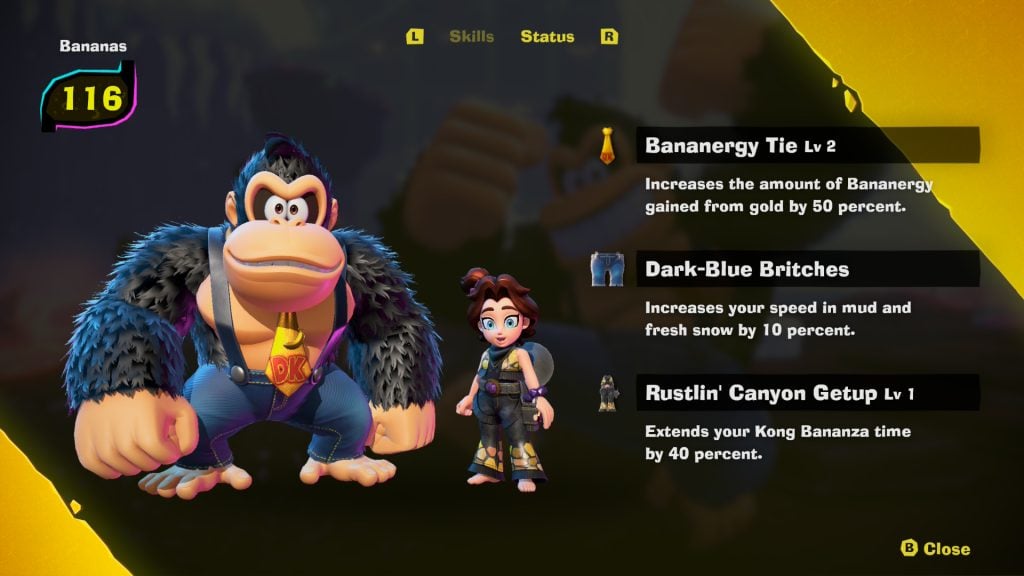
If all of that wasn’t enough, you’ll also discover secret areas scattered across each world. These are usually marked by a manhole cover or small metal door. Most of these bonus stages are combat challenges where DK has to defeat waves of enemies within a time limit, but others are much more creative. One had me destroy a building as quickly as possible, while another paid tribute to classic side-scrolling Donkey Kong Country levels. I won’t spoil more, because they’re far too good to ruin, but you will definetly want to be seeking these stages out any time you enter a new layer.
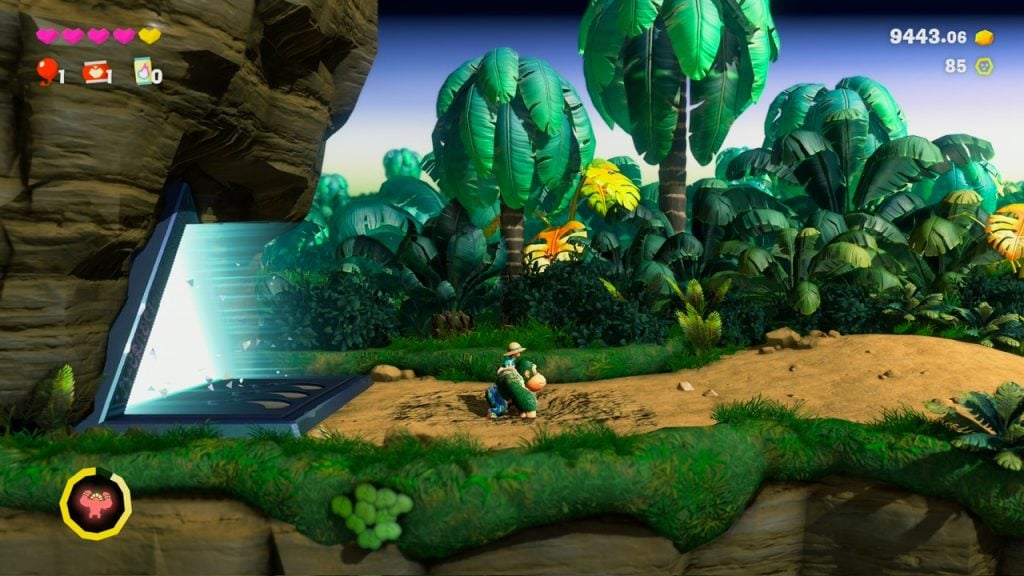
These optional stages start off simple but ramp up in difficulty quickly, with some of the toughest moments in Donkey Kong Bananza being found in these challenges, so be ready to die more than a few times in the later areas. But even though they’re completely optional, I found myself jumping into every single one I came across. Not knowing what kind of challenge or nostalgic callback awaited me kept these stages feeling fresh and exciting, even after the 20th time I discovered one.
All of these collectibles and secrets are so well placed throughout Bananza’s world that I can’t help but be in awe of the level design on display here. There’s so much packed into this game that you could play for dozens of hours and still not find nearly everything. And again, almost all of it is optional. This isn’t the kind of game where the credits roll and you’re finished. I fully plan to return to Bananza the moment I’m done writing this review and collect every last secret it has to offer.
Monkey Jump
But, what about the platforming, you might ask? I’ve talked a lot about smashing, but not so much about movement. Unlike Mario, who’s known for long jumps and precision hopping, Donkey Kong relies on climbing. Like in Breath of the Wild, DK can scale almost every surface you find in the game. Some exceptions exist, such as wet or slippery walls, but most of what you see is climbable.
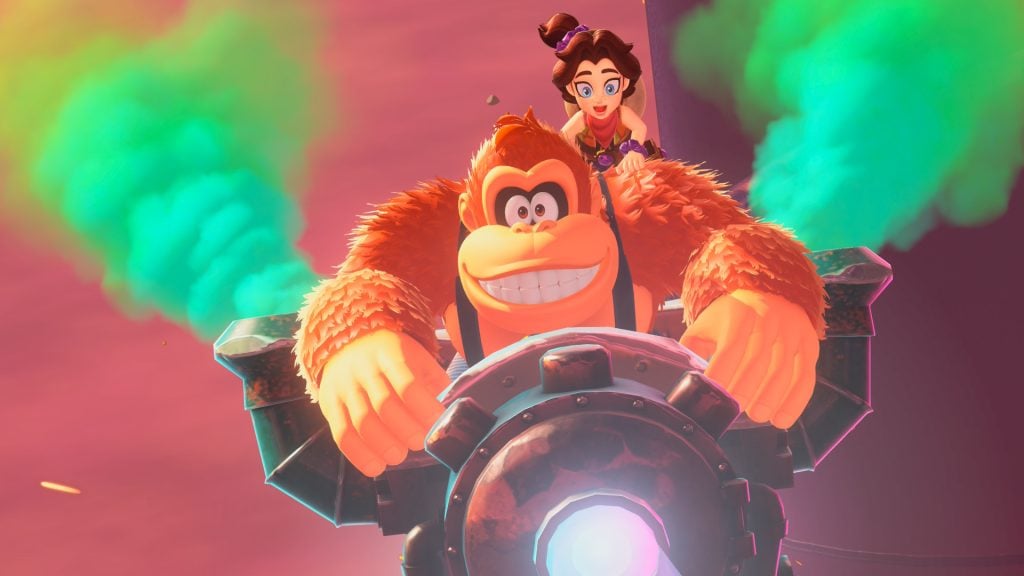
There’s still some jumping involved, and you can chain moves together — like rolling into a jump and then rolling again in midair — but climbing and smashing are the focus. It took me a while to realize this isn’t a Super Mario game. Not every obstacle requires a trick jump. And once I accepted that, I came to really appreciate how different this game feels. But if you’re looking for a bit more variety, you’ll encounter power-ups later in the game that grant DK fresh new ways to navigate the world — albeit temporarily.
When you’re ready to move on from smashing everything in sight, each stage also has main story objectives to complete. These often build up to boss battles, but before you fight some of these enemies, you’ll experience the feature that gives Donkey Kong Bananza its name — Bananza Mode.
Bananza Mode allows DK to transform into a variety of animals, each offering unique abilities. The zebra form grants incredible speed, while the gorilla form channels DK’s raw strength — temporarily opening up new ways to explore the environment and solve puzzles. But that’s just the beginning! Bananza features several other transformations, including a few that weren’t shown in trailers and turned out to be an absolute blast to play. To unlock these powerful forms, you’ll need the help of towering ancient beasts known as The Elders. These gentle giants boast some of the coolest character designs in the game — and they all seem to have a few unexpected hobbies, too.
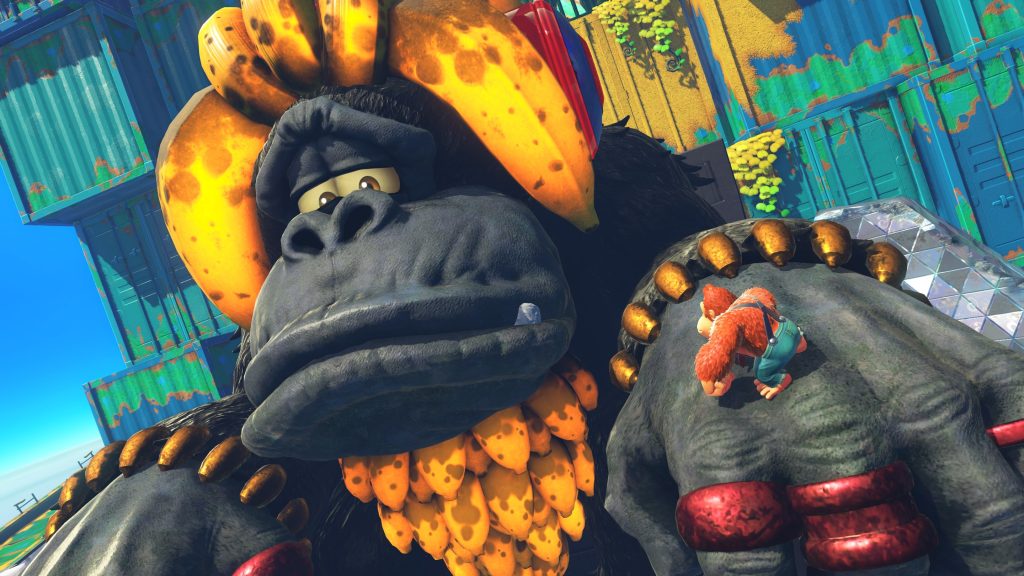
Just as the transformations keep traversal feeling fresh and new, the boss battles in Bananza are equally creative. Each layer features its own set of boss fights, many of which require you to use the environment and newly acquired Bananza powers to your advantage. One battle had me hurling debris at a flying enemy’s wings to bring it crashing down, then pummeling it while it was stunned. Another had me on a minecart rail, launching explosive rocks at a giant, laser-firing mask in a sequence that immediately felt like a boss fight straight out of Splatoon. The sheer variety of boss encounters and the different tactics required to defeat them genuinely took me by surprise, with nearly every stage introducing a new gimmick to overcome.
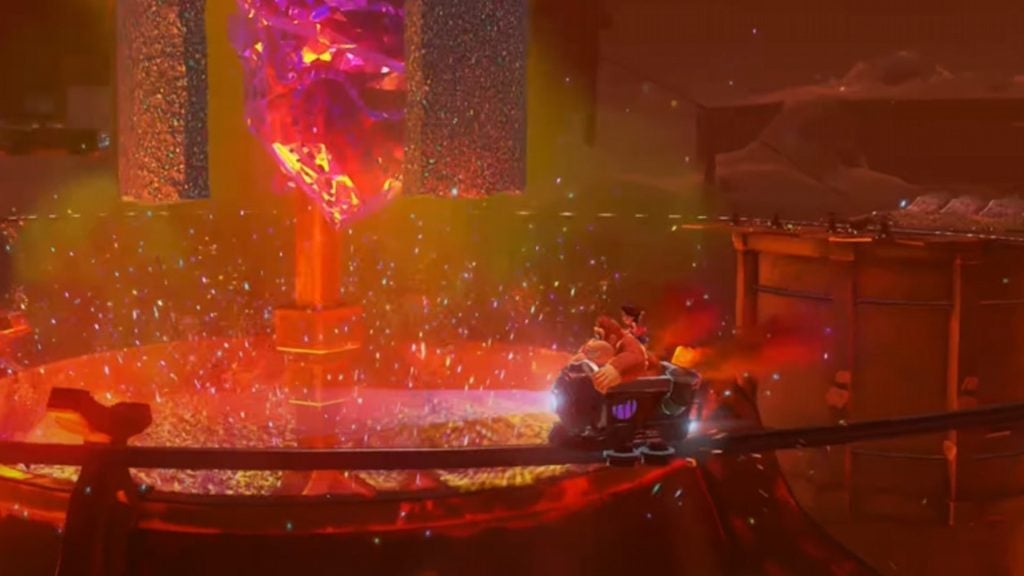
I will say that some of the early game fights are far too easy, but the difficulty ramps up significantly as you progress. So if you’re worried the game might be too simple, just give it time — the challenge will come, and it’s absolutely worth the wait.
Monkey… Feel?
Donkey Kong Bananza isn’t just about big boss fights and smashing terrain. It tells a surprisingly emotional story, especially in how it shows the growing friendship between DK and Pauline. DK doesn’t say much, but his expressions speak volumes. The game does an excellent job of showing emotion without dialogue, and watching the bond between the two characters evolve was genuinely sweet.
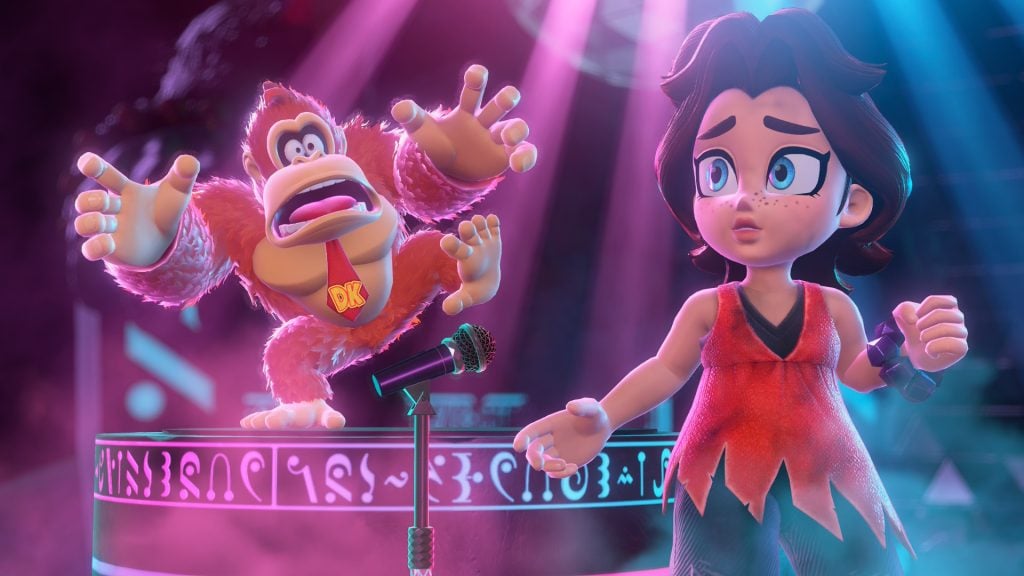
Some of my favorite moments come at night when DK and Pauline stop to rest. Occasionally, Pauline wakes up and asks if DK is still awake. If you answer yes, she opens up about how she’s feeling. In a cold region, she might mention how nice it would be to sit by a warm fire. In a poisonous swamp, she might joke about turning the toxic rivers into a tourist attraction. She even talks about the people and creatures she’s met — and how much she wants to help them.
These small scenes go a long way in making you care about both characters, and you can clearly start to see how much they care about each other. With the addition of voice acting — some of the best ever recorded for a Nintendo game — it becomes incredibly easy to get emotionally invested in DK and Pauline. It adds a surprising layer of depth that elevates the game far beyond just a monkey smashing things.
Monkey Love
Donkey Kong Bananza is a master class in 3D platforming and easily one of Nintendo’s most polished games to date. Every moment I spent smashing, climbing, and exploring was pure joy. But what truly surprised me was the heartfelt story that made me genuinely care about the characters.
From the massive, layered worlds to the wildly creative level design, Bananza constantly rewards your curiosity with secrets and hoards of hidden collectibles. And then there’s the soundtrack — track after track of amazing tunes that blend fresh compositions with remixes of DK’s greatest hits from every era of gaming. Whether you’re bulldozing through a cave wall, jamming out to the killer soundtrack, or pausing for a quiet moment between DK and Pauline, Bananza simpily hits all the right notes.
If you own a Nintendo Switch 2, Donkey Kong Bananza isn’t just a must-play — it’s the best game on the system by a mile.
Leave a Comment
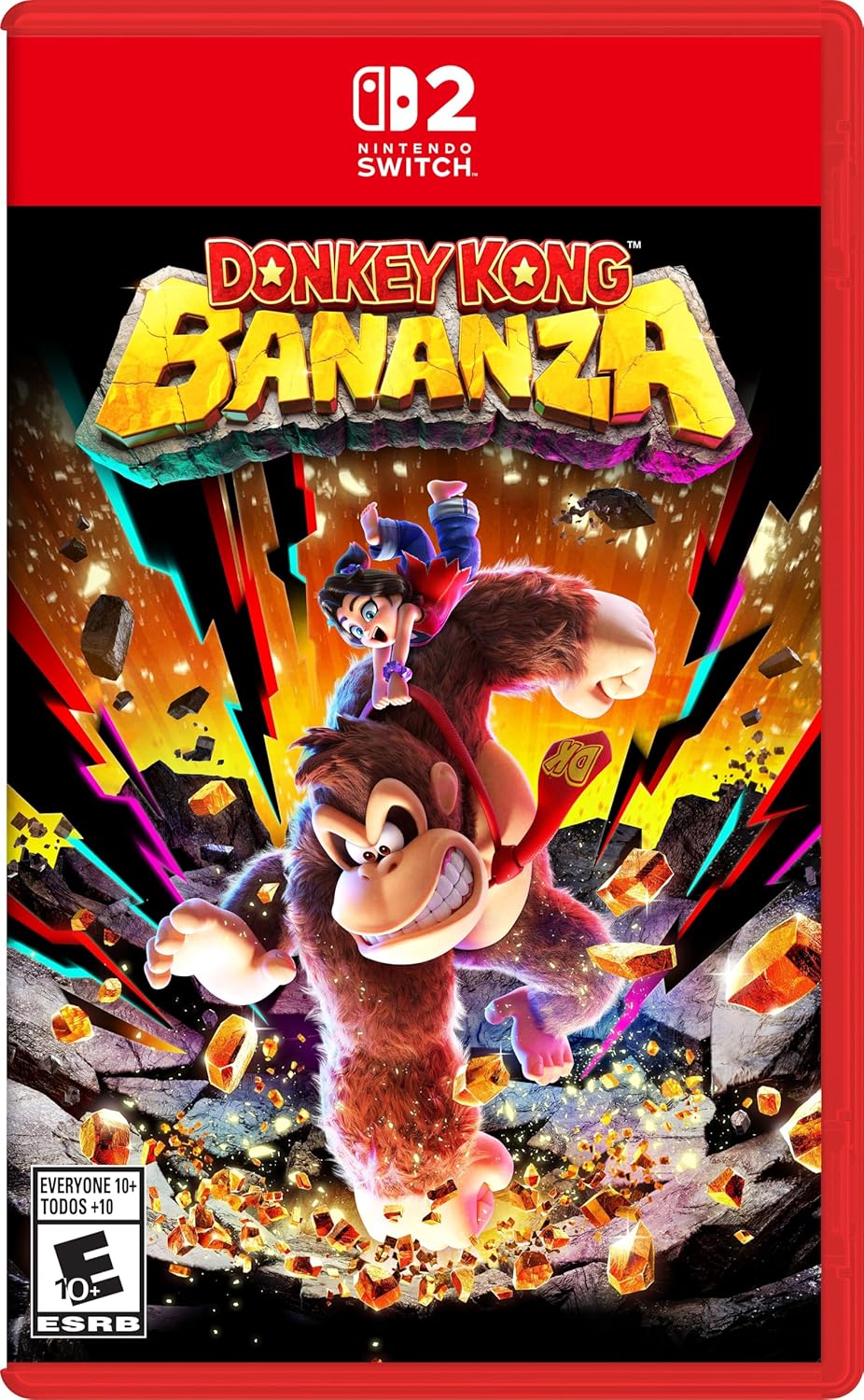
System: Nintendo Switch 2
Release Date: July 17, 2025
Categories: Action, Adventure
Publisher: Nintendo
Developer: Nintendo

